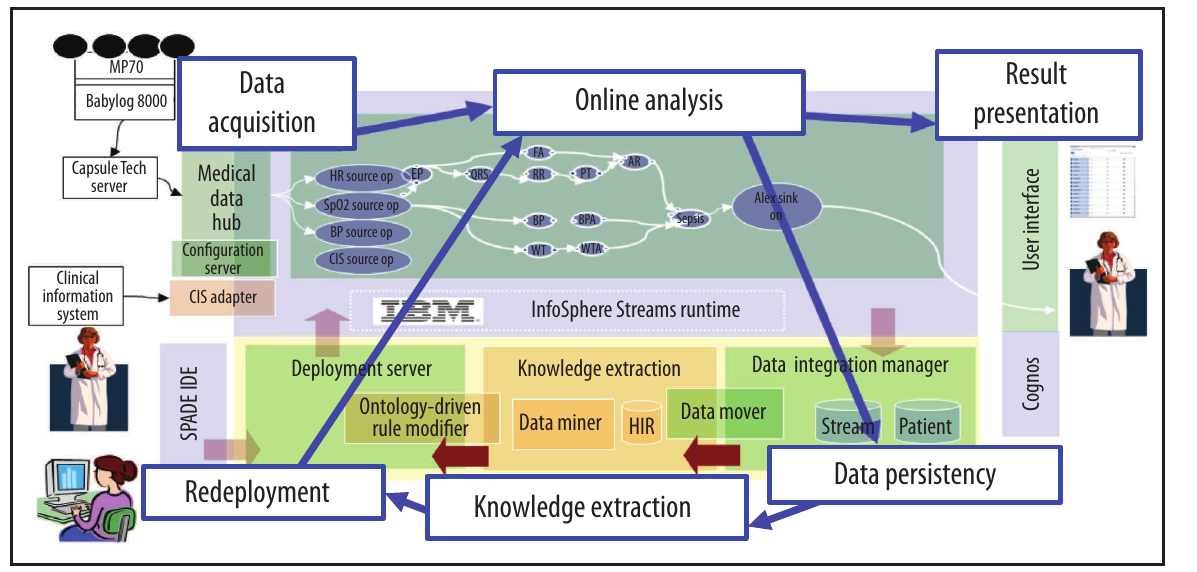Big Data in Neonatal Intensive Care
By Carolyn McGregor
NOTE: This is an overview of the entire article, which appeared in the June 2013 issue of Computer magazine.
Click here to read the entire article.
Throughout the healthcare industry, big data is emerging as a resource that has the potential to significantly improve medical discovery, quality of care, and productivity. This article illustrates the potential ifor the utilization of big data (read informatics) is in neonatal intensive care units (NICUs) in the U.S. and Canada, where critical care for premature and ill full-term infants represents a considerable percentage of healthcare expenditures. These infants’ length of stay is considerably longer than that for other critical care patients, and their monitoring is complex and requires healthcare providers to make clinical decisions in real time.
The article points out that health care providers in NCIUs are working with medical monitoring devices that can be up to 15 years old. Although older monitors have the capacity to output real-time, high frequency data, the sheer magnitude of data can be challenging to analyze in a timely manner. Researchers have introduced an online health analytics platform called Artemis (illustrated below) that leverages high speed physiological data with other electronic health record data. The Artemis platform was first deployed in 2009 in the NICU at The Hospital for Sick Children (Sick Kids) in Toronto. In 2010, a newer version called Artemis Cloud, was introduced at the Women and Infants Hospital of Rhode Island (WIHRI) where more than 250 patients were enrolled in a study of neonatal instability. A third Artemis installation was recently applied at Sick Kids to enable retrospective data mining on a dataset of nearly two years of 30-second spot readings obtained from 1,151 patients.

Artemis platform. Artemis enables concurrent diagnoses of multiple patients through real-time analysis of multiple data streams.
See the article for a perspective on the impact that informatics platforms such as Artemis could have on healthcare, not only in NICUs. Looking to the future, researchers hope to compare analytical results with clinical observation and treatment practices seeking new patterns in real-time physiology data that could lead to earlier detection and prevention of various diseases in healthcare.
ABOUT THE AUTHOR
Carolyn McGregor (c.mcgregor@ieee.org) is is the Canada Research Chair in Health Informatics and a professor at the University of Ontario Institute of Technology, Canada. Her research focuses on critical care health informatics, in particular on the use of big data in neonatal health informatics. McGregor received a PhD in computer science from the University of Technology, Sydney, Australia. She is a senior member of IEEE.






